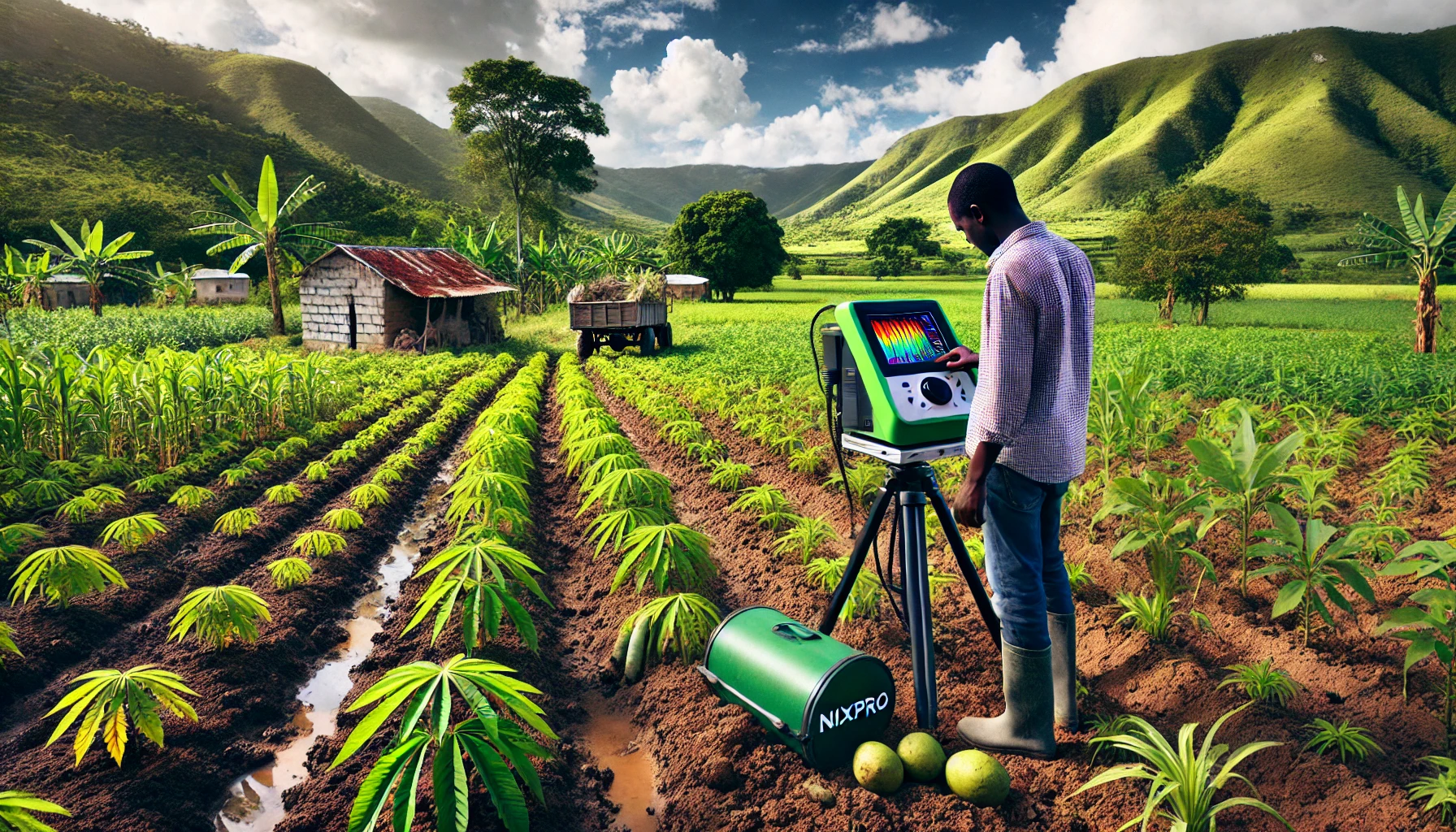From Soil to Sustainability: The Role of Sensors in Haitian Agricultural Innovation
Researchers used advanced proximal sensors to analyze soil properties in Haiti’s Central Plateau, revealing significant variability in soil composition and pH. The findings highlight the potential for precision land management to improve agricultural productivity and sustainability in the region.

In a groundbreaking study conducted by researchers from Association Zanmi Agrikol in Haiti, the Federal University of Lavras in Brazil, the National Research Centre in Egypt, and the Indian Institute of Technology in Kharagpur, alongside colleagues from Louisiana State University and Georgia Southern University, the physical and chemical properties of Haitian agricultural soils in the Central Plateau were characterized using advanced proximal sensors. The researchers employed portable X-ray fluorescence (pXRF) and the NixPro color sensor to examine 166 soil samples across three agricultural sites managed by the Association Zanmi Agrikol (AZA), a leading organization focused on agribusiness and community development in Haiti. The goal of this study was to assess spatial variability in soil properties and identify potential limitations for agricultural productivity, with the hope of improving land management and crop yields.
Mapping Haiti’s Agricultural Terrain: A New Approach
The Central Plateau of Haiti is characterized by its tropical savannah climate and limestone-rich geology, which greatly influences soil composition. Farmers in this region rely on small plots for subsistence farming, growing crops such as cassava, plantains, corn, and yams. However, the challenging topography, combined with deforestation and soil erosion, makes agriculture in this region difficult. The AZA farms, located between the Artibonite River and National Road 3, serve as important educational and agribusiness hubs, providing resources such as soil and water testing services. Despite the significant role these farms play in Haitian agriculture, there has been little advanced research on the physical and chemical properties of the region’s soils, and even less on the use of cutting-edge technology for soil analysis.
Proximal Sensors Reveal Hidden Soil Patterns
In this study, researchers collected soil samples from three plots: one near a school, another near a soccer field, and a third in a dedicated farming area. The samples were analyzed using the pXRF spectrometer to detect the presence of elements such as magnesium, aluminum, potassium, calcium, manganese, and zinc, among others. Concurrently, the NixPro color sensor measured soil color, which can be indicative of soil organic carbon levels. Results showed that the soils exhibited a high degree of variability, even over short distances. This variability was observed in both the chemical composition and the physical characteristics of the soil, including pH levels, which ranged from moderately acidic to highly alkaline, with values reaching up to 8.4. High soil pH can restrict the availability of essential micronutrients, impacting crop productivity. Additionally, the presence of coarse skeletal fragments, such as stones and cobbles, in the deeper soil layers limits water retention and nutrient storage, further complicating agricultural efforts in the region.
From Alkalinity to Fertility: Managing Soil Challenges
While the overall salinity levels in the soil were low and did not pose a threat to crop growth, the variability in soil composition suggested that different areas would require different management approaches to optimize productivity. The researchers noted that, despite the challenges posed by the alkaline soils and skeletal fragments, the use of supplemental irrigation and fertilization whether through compost or commercial fertilizers could help mitigate some of these limitations. In particular, the findings suggested that farmers could benefit from more precise land management strategies, tailored to the specific conditions of different plots. By addressing the unique challenges of each plot, such strategies could lead to improved crop yields and more sustainable farming practices.
Unlocking the Secrets of Soil Composition
One of the key findings of the study was the correlation between certain soil elements. For example, the researchers found significant relationships between iron and manganese, as well as copper and zinc, which are important for understanding soil fertility. Additionally, the NixPro color sensor revealed differences in topsoil color that were likely linked to variations in soil organic carbon content. The ability to predict soil organic carbon levels based on soil color is a valuable tool for farmers, as it provides insights into soil health and fertility without requiring costly laboratory analysis.
Paving the Way for Sustainable Agriculture in Haiti
This pilot study represents a major step forward for Haitian agriculture. It is the first study to use advanced proximal sensors for in-situ soil analysis in Haiti, and it has demonstrated the potential of these technologies to improve agronomic decision-making. The researchers emphasized the need for further studies to refine the use of these sensors and to develop regional models that can predict key soil properties, such as organic carbon content, based on sensor data. Such models could help farmers make more informed decisions about soil management, ultimately leading to higher productivity and greater food security in the region.
The research also lays the groundwork for a much larger soil sampling campaign, which will involve the collection and analysis of 120,000 soil samples across Eastern Haiti. This large-scale study will provide a more comprehensive understanding of the region’s soils and help identify strategies for improving agricultural productivity on a broader scale. As AZA continues to expand its educational and community development programs, the results of this research will be integrated into their curriculum, providing students and local farmers with the knowledge and tools they need to optimize their farming practices. By leveraging cutting-edge technology, this study paves the way for more sustainable and productive agriculture in Haiti, contributing to the country’s long-term food security and economic development.
- READ MORE ON:
- Haitian agricultural soils
- Haiti
- pXRF
- NixPro
- Association Zanmi Agrikol
- FIRST PUBLISHED IN:
- Devdiscourse
ALSO READ
Haiti's Hunger Crisis: Gang Violence and Food Insecurity Escalate
UN rights office calls for more action to combat ‘senseless criminality’ in Haiti
Haiti's Growing Child Hunger Crisis: A Step from Catastrophe
Haitian Presidential Council Members Accused of Bribery
Carnage in Haiti: Gran Grif Gang's Deadly Rampage










